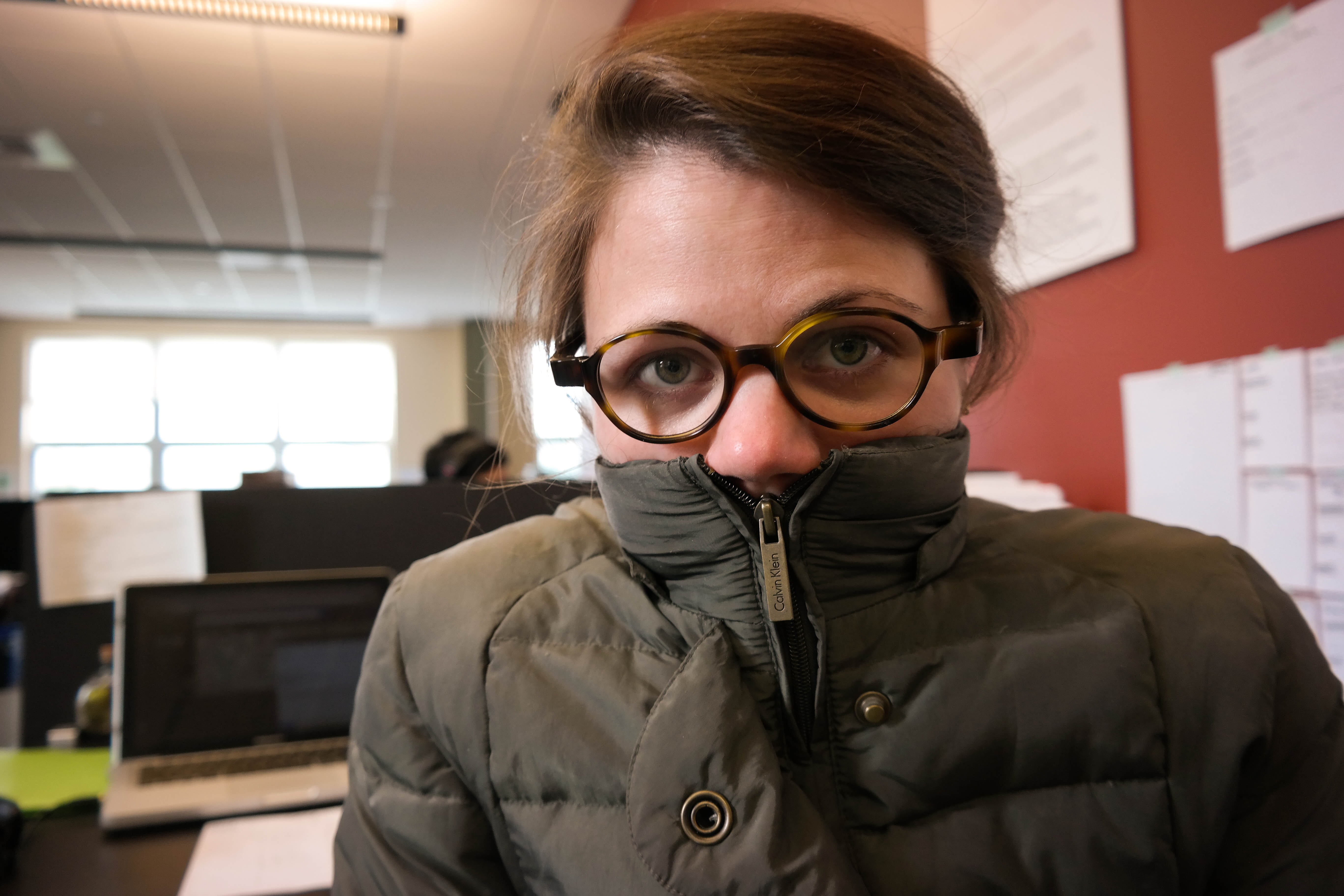This story was originally published on August 7, 2015.
Forget the tense staff meetings. Forget the latest workplace romance. By far, the hottest drama in an office building in the summertime is the war over the thermostat.
“I wouldn’t call it a war. I would call it a dispute,” says WESA’s afternoon host Larkin Page-Jacobs about her ongoing battle with morning host Josh Raulerson over the temperature in the on-air studio.
“Josh comes in and turns it all the way to cold for his morning shift. But then when I come in to do my shift, it is freezing. I didn’t really know how to address it. You know, sometimes I was a little vindictive. I would push it all the way to hot. And so when he would come in in the morning, he would feel like he was boiling.”
The move wasn’t lost on Josh.
“I get in here at four in the morning, and I come into that studio and it is stifling,” Josh says. “So I always have to put the thermostat on full cold. And it became quickly apparent to us that we couldn’t agree on where it should be set.”
That, as it turns out, is a pretty common feud in offices. There are even studies to back that up.
LISTEN: Why Frigid Offices Are Bad for Everybody
“If you look at studies of office workers, and the kinds of things that they complain about, thermal issues are number one,” says Cornell’s Alan Hedge, who’s been studying this issue for more than 40 years. In fact, Hedge published the first research on a topic that’s getting a lot of attention today: the differences in thermal comfort between men and women in the workplace.
“And what that research showed, of course, was that women were experiencing more issues at the temperatures that were then being set in the environment, which are the temperatures that still tend to be used today.”
In fact, a study just published in the journal Nature Climate Change found that the standards of comfort that have endured since the Depression era are likely based on the metabolic rate of a 40-year-old, 155-pound man. And the problem with that, Hedge says, is that women, for a variety of biological and cultural reasons, tend to be colder than men in offices. Men tend to have more muscle mass, which is naturally insulating. And the standard business suit dress code for men also keeps them warmer.
But Hedge has also found evidence that cool office temperatures in the summer aren’t really doing anybody much good when it comes to productivity. He says it’s always been assumed that if people are a little bit cool, they’ll do more work. In reality, he’s found the opposite.
“We find that when people are in an environment that they find to be too cold, typically a temperature like 68 to 70, they do up to a third less work on their computers than if they’re in an environment that is more comfortable.”
That would be something around 76 degrees—which Hedge says is the temperature where workers are the most productive. It also happens to be a good four to six degrees above the average office temperature. Bottom line—we are over-air conditioning our workplaces in the U.S.

WESA radio hosts Josh Raulerson and Larkin Page-Jacobs have an ongoing feud over the temperature in the on-air studio. She likes it warmer, he likes it cooler—which is not an uncommon disagreement among men and women in shared work spaces. Photo: Lou Blouin
It turns out geography actually plays a huge rule in what your perception of comfort is. Hedge has found that people from tropical countries prefer the thermostat in the 80s. And in Japan, the government had success cranking the thermostat up to 82, while relaxing the clothing policy. (It also saves Japan over a million tons of carbon emissions a summer.) Meanwhile, in the U.S., we continue to throw away a ton of money and energy by loading up on weapons to win our office AC wars.
“One of the ironies is that when you look at the sales of personal heaters, the peak months are July and August—which is crazy. It means the company is paying money to over-cool the air. And then you have people who are actually trying to warm the environment up.”
Where we’re heading, Hedge says, is into an era of more and more customization. Right now, Cornell is helping to develop a technology that sort of does the inverse of what most offices do now. It would leave temperatures a little higher in the office overall and provide high-tech cooling at the desk-level for people who get too warm. The new system could be on the market by 2019. But Hedge says we don’t need to wait that long to do some common sense things: Turn up our thermostats, let people wear shorts to work, give workers desk fans, and in doing so, make everyone around the office a little bit more comfortable.
Back at the WESA office, radio hosts Larkin Page-Jacobs and Josh Raulerson decided on a compromise. When he leaves the studio, he turns the thermostat all the way up. And when Larkin finishes her shift, she turns it all the way back down. It’s possibly the worst thing you can do for energy efficiency. But it keeps that uneasy peace.



